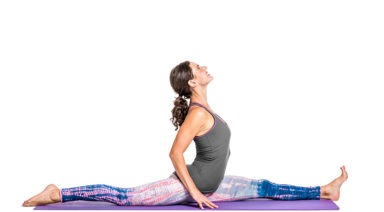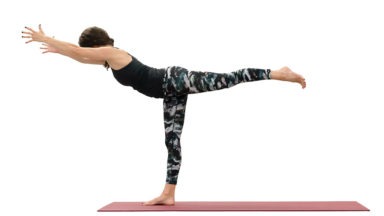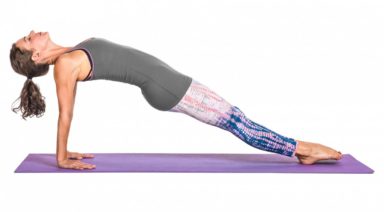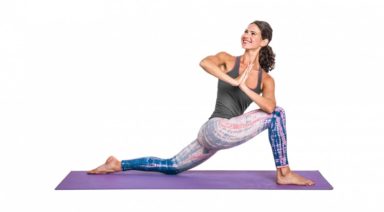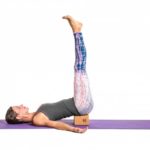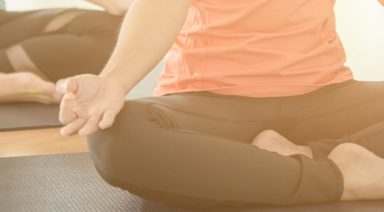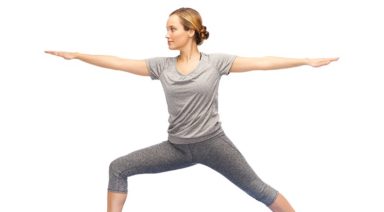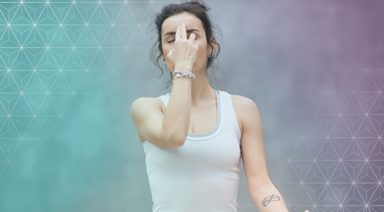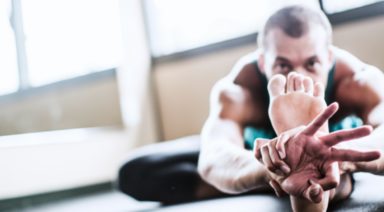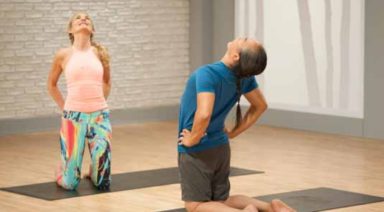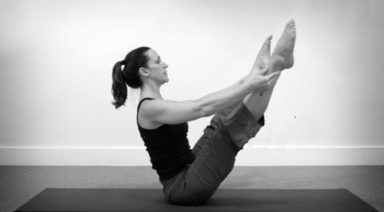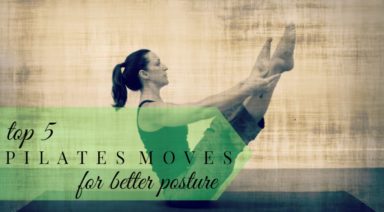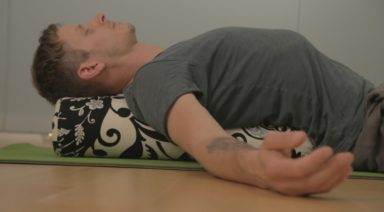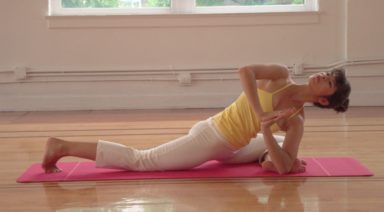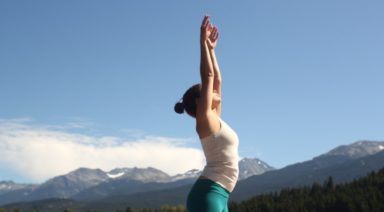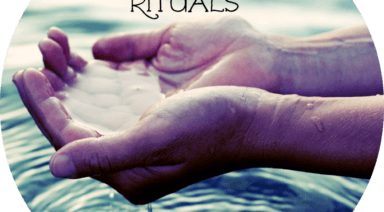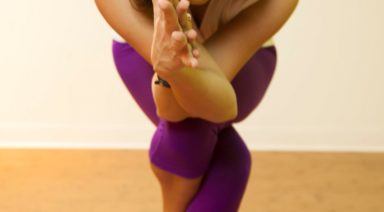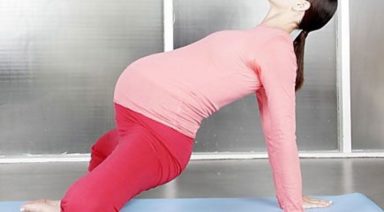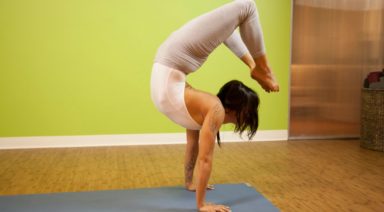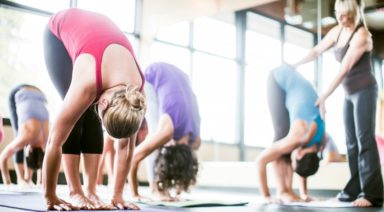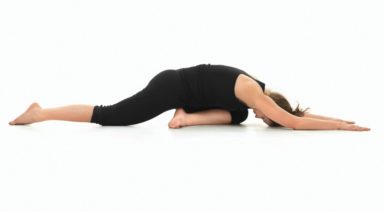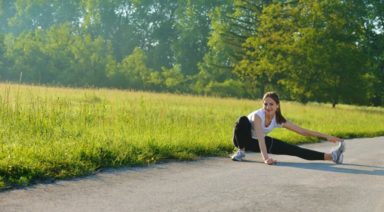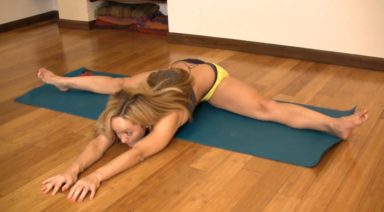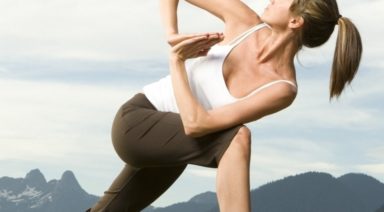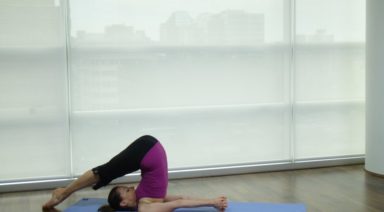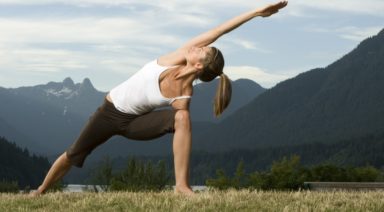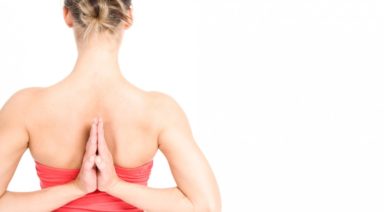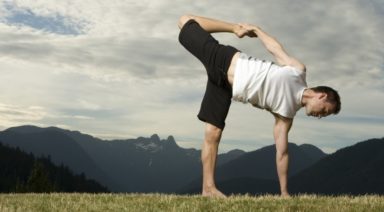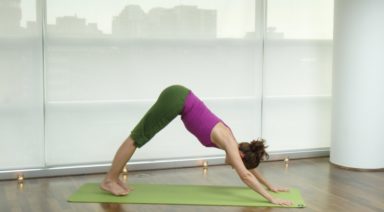Utthita Hasta Padangusthasana: Extended Hand to Toe Pose
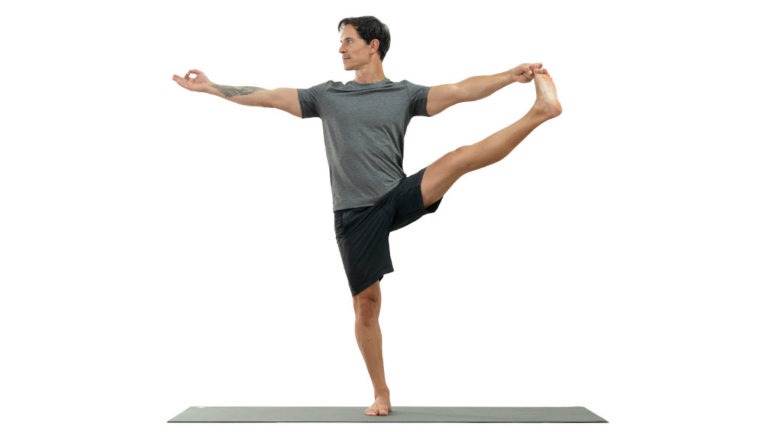
Utthita hasta padangusthasana (oo-TEET-uh HAWS-tuh POD-ung-goos-THAWS-un-nuh), also known as extended hand-to-toe pose, is a challenging and invigorating posture that stretches and strengthens while calming the mind and improving focus.
STEP-BY-STEP
- Start standing with your hands on your hips. Draw your left knee in towards your belly and interlace your fingertips in front of your shin. Level your hips so they are equidistant from the ground. Pause here for a breath.
- Reach your left hand on the inside of your left knee and take hold of your big toe with your first and second fingers. Stay here, or lengthen your spine and extend your foot forward any amount.
- Hold for 3-5 breaths and release back to standing. Repeat on the other side.
ADJUSTMENTS/MODIFICATIONS
- For help with balance, try this pose with your free hand against a wall.
- Keep the knee on your extended leg bent, or wrap a strap around your foot and take hold of the strap.
- Option to extend your foot out to the side, and opposite arm out to the other side. Keep your shoulders level and relaxed away from the ears.
SANSKRIT
- Utthita = extended
- Hasta = hand
- Pada = foot
- Angustha = big toe
- Asana = pose
PHYSICAL BENEFITS
- Stretches hamstrings and hips.
- Stretches the inner leg line (adductors).
- Strengthens the back and arm muscles.
ENERGETIC BENEFITS
- Improves sense of balance.
- Calms the mind and improves focus.
PREPARATORY POSES
- Reclined hand to toe pose | Supta padangusthasana
- Monkey lunge | Anjanayasana
- Half splits | Ardha hanumanasana
SEQUENTIAL POSES
- Dancing Shiva pose | Parivrtta hasta padagusthasana
- Front splits | Hanumanasana
- Downward-facing dog | Adho mukha svanasana
COUNTER POSES
- Reclined hero pose | Supta virasana
- Standing forward bend | Uttanasana
- Dancers pose | Natarajasana
###Legal Disclaimer Before participating in any exercise program or using any fitness products or services that may be described and/or made accessible in or through the Gaia Website and/or the Services, you should consult with a physician or other healthcare provider. Read more about Gaia’s Terms Of Use.
Hanumanasana: Front Splits Pose
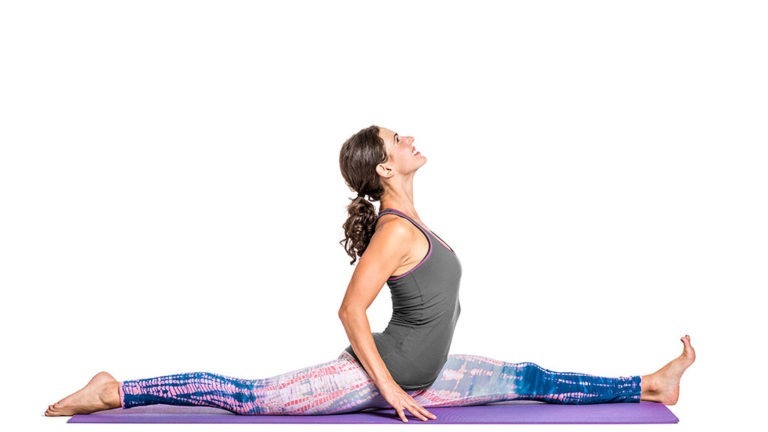
ADJUSTMENTS | BENEFITS | SEQUENCING | SANSKRIT | STEPS
Hanumanasana (hah-new-mahn-AHS-ah-nah) honors the great leap made by Hanuman, the famous monkey god from the Ramayana, across the ocean from India to the mountains of Sri Lanka. Front splits pose demands flexibility, strength, and stability.
Philosophy + Origin
More than just an incredible leap, Hanuman is remembered, celebrated, and worshiped because of his great devotion and courage. To be devoted, one must be bold enough to stand firmly in their beliefs, selflessly serving others and putting others’ needs above their own.
Because of its physical demands, it’s easy to get caught up in “achieving” the outward appearance of the posture. As such, it’s important to keep your ego in check as you dedicate yourself to the posture. Above all, invite kindness and selflessness to flow freely from the posture. As you practice, ask yourself how you can embody Hanuman’s devotion both in your physical yoga practice and your everyday life.


